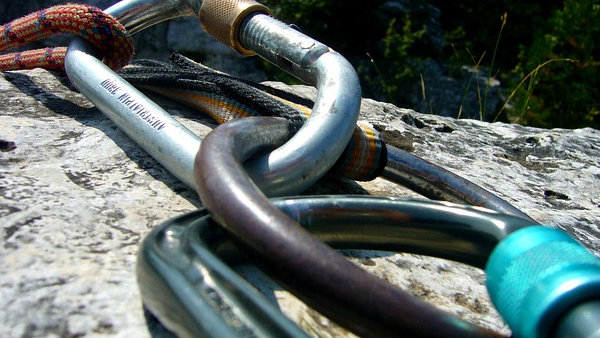ATD Blog
5,127 Attempts: Learning to Think Wrong
Thu Aug 01 2013

I love to have a clean house, but I hate cleaning. With one exception…my Dyson. It’s the Mercedes of vacuum cleaners, a $600 bagless marvel that sucks up everything in its path. It has outperformed and outlived the many $100 vacuum cleaners now in my basement.
Did you know that Inventor James Dyson had a few bumps in the road before making it big? In fact, he designed 5,127 prototypes of his vacuum cleaner before he got it right. Yes, over 5,000 strikes before hitting the homerun. Imagine the criticism and moments of self-doubt Dyson must have endured. Can you just hear his colleagues, friends, or family asking him when he was going to get a real job, or invent something that actually worked?
In our instant-gratification world, many would have listened and done exactly that, or at least quit counting the number of failed prototypes on the road to success. But he obviously persisted, and now Dyson products are sold in 45 countries with billions in revenues. Not only that, the James Dyson Foundation supports thousands of young minds aspiring to become design engineers.
This leads us to the question, what if he had stopped at 50, or 500, or even 5,126? Dyson knew a thing or two about risk and allowing for mistakes on the way to greater outcomes. How often do we view something that doesn’t work as planned the first time as failure, and give up? How often do we criticize others (rather than encourage) when they try something and it doesn’t work out as planned?
This got me thinking as to how our profession, workplace learning and performance, could change that dynamic, with the end-goal of creating training that is truly engaging, challenging, and impactful to the businesses we serve.
At Impact Instruction Group, we work with a range of client industries, including healthcare, manufacturing, financial services, and retail to name a few. If there’s one theme that emerges time and again in my conversations with training and organizational development leaders, it’s this: our people are now risk managers more than ever before, and part of their job is to mitigate risk.
It’s a logical response, given some of their industries as well as the economy over the past few years. But what are the costs in talent, learning, innovation, and organizational results if people don’t embrace some risk and instead mitigate the fear of making mistakes?
There is a spectrum to risk, and it pays to sharpen our awareness of which risks are smart, and which ones may cause great harm in the long run. When it comes to training and development initiatives, there’s a lot of room to embrace smart risk and making mistakes.
Here are some ideas to help you and your team when it comes to risk.
1. Take an honest assessment of the lay of the land. Research your industry as a whole, and then look at your organization to assess risk tolerance. Compare your culture in relation to the industry. Do the same thing for functional areas or lines of business, then your team, and then yourself. It’s important to know how you stack up organizationally, as well as which people in your organization are likely to embrace risk and making mistakes. A few questions to help you get started.
Which companies in my industry seem to be breaking the mold with new products, services, or processes? What are the results?
What are the attributes of the people making that happen?
What mindsets and skills do they have? What role did learning and development play?
How would I/my team compare with those mindsets, skills, results?
2. Assess learning experiences from a risk perspective. This can actually take several angles, from both design and content. One, do your training offerings push things out of the box? Will learners taking your course go out of their comfort zone and into a different perspective? And, two, do you have any offerings that actually teach your teams how to develop their skills around smart risk and making mistakes?
3. Provide structure. This may sound counterintuitive, but a little bit of structure can raise the comfort level for risk. In Dan Pink’s Drive, he shares the story of Atlassian, an Australian software company that introduced a concept called the FedEx Day. These are one-day bursts of creativity, where employees are allowed to work on anything they would like, with two rules: 1) it can’t relate to their day job, and 2) they have to deliver something in a single day (hence the “FedEx” title). The results have been astounding: new innovations, creativity, and I’m betting a comfort level with mistakes—all from a single day with two simple rules.
4. Look at failure and mistakes through a different lens. Most of us have been conditioned to see mistakes and failure as a negative, because we are a results-driven culture. But what if we as leaders viewed mistakes differently, applauding a person’s effort first, and then results? Taking smart risks and making mistakes are simply opportunities for growth.
When we take the time to acknowledge the effort and remove the negativity, it encourages people to try again. Instead of mistakes being tagged as “failure,” they can be tagged as “stepping stones” to the desired outcome. This new lens can make your team more open, positive, loyal, and innovative.
